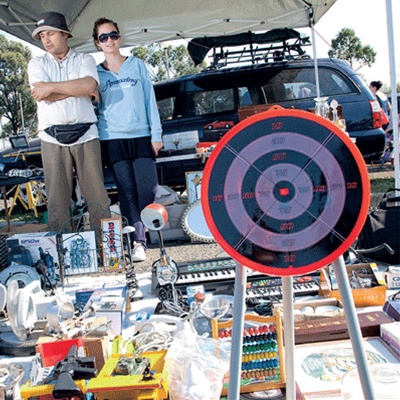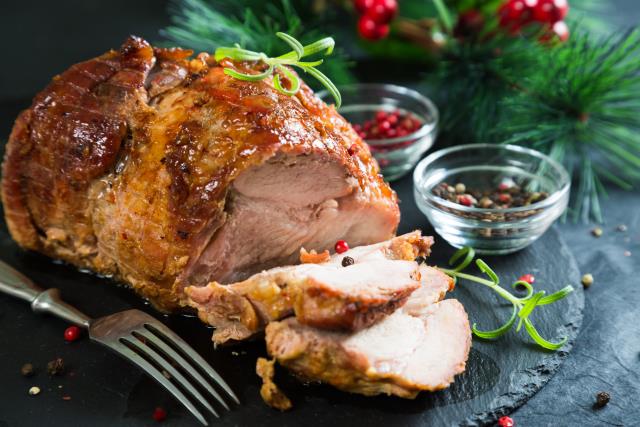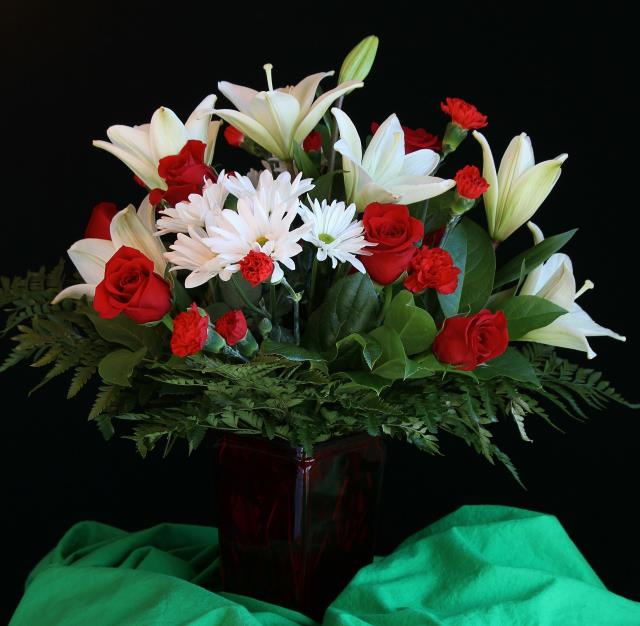Times might be tough for mainstream retailers, but Nick Toscano finds there are still plenty of shops and stalls filled with customers eager to spend their cash.
Outside the ticket booth, the stream of cars has tangled to a standstill. Thousands of people are coming in throngs down the dusty road, weaving through the gridlock, at 10am on a sunny Saturday.
But it’s not a music festival that’s drawn the droves here. Welcome to Laverton’s flea market. Admit one, no passouts.
With hundreds of traders and more than 1600 stalls spread across eight hectares of bitumen, like Wall Street is to the stock market, this is the beating heart of the secondhand economy in Melbourne’s west.
Figures from the last financial year show secondhand retail has ballooned to become a $13 billion industry.
According to a Galaxy Research study, commissioned by classifieds website Gumtree, more than 80 per cent of Victorians buy secondhand goods while many savvy Australians are earning an average of $2400 a year selling them.
It’s in stark contrast to the grim tidings that face brand-name retail behemoths.
Enterprises like Colorado, Borders and the Premier Retail Group have had stores topple like dominoes after being hammered by weak consumer sentiment, interest rate fears, tighter household budgets and the burgeoning popularity of online shopping.
As times turn tough, it seems Australians are stretching the dollar further and buying clothes and commodities secondhand, often at less than half the retail price.
Inside the fencing of Laverton’s Rubble & Riches market, the crisp air tantalises with aromas of sizzling chorizo sausages, while the sibilance of different dialects drifts about the marketplace.
Stallholders bring out boxes and crates from their cars, lay their wares on trestle tables or spread them out on mats.
It’s a hive of commerce where cash is king and constantly changing hands.
First stop is burly builder Sam Patto, who’s selling secondhand power tools in front of his van: sanders, saws, drills and angle-grinders.
It’s his fourth week running a stall at the market, and he’s raking in an extra $1500-2000 a weekend on top of his weekday plastering job. Business is looking good.
‘‘It’s $150 for that drill set, there,’’ he says to one interested customer hovering over an item. The set cost Sam $300 new and he reckons it’s still got another three years of life.
‘‘I’ve been buying tools for work over the years from eBay or from auctions. I use them, get new ones and sell the old ones. It was all dead money just sitting at home.
‘‘People know it’s cheaper here, by about half the price, and if something’s wrong with it, they can bring it back.
‘‘People here like a bargain, and they like to bargain.’’ He laughs. ‘‘They always like to bargain.’’ Not far away, a father-and-daughter team is manning a colourful, eclectic mix of everyday items.
Dartboards, dumbbells, children’s toys, old TVs, assorted cabling …
you name it, Omer Dikbas probably has it.
Since starting out with a small stall at the market in 2010, Omer has turned the secondhand trade from a part-time hobby into a full-time job, earning enough to support his family.
During the week, he’s trawling auctions and secondhand shops for things he thinks can fetch a profit.
‘‘People come here to find things that are different items to what they’d get in other stores,’’ he says.
‘‘Here we have an artistic, handmade wooden table …
it’s very unusual, and people find these things very interesting.’’ Omer earns about $400 a day over the two days he runs the market stall.
Trade at Rubble & Riches certainly hasn’t dwindled, says market co-owner Tony Bernardo, who reckons secondhand and wholesale retail is ‘‘recession-proof’’. If anything, he believes, it’s booming.
‘‘When the economy doesn’t do so well, this type of market does better. Even people who are getting laid off, losing their jobs from places like Toyota, have started to come here to sell different things too.
‘‘And immigrants from different cultures, like Indians, Africans and Afghans, come here to sell things. People can find a real treasure, a real bargain, for next to nothing.’’
There must still be something special about discovering an old hardback edition on a dusty bookshelf. Despite a tough market for book retailers, secondhand book shops seem to be holding their own.
Online competition has forced the closure of bigger stores, but it’s business as usual for books in the secondhand sector, listed in the study as the No.1, most commonly bought secondhand item during the last financial year.
Woodend Bookshop’s acting manager Patricia Moore says there’s something romantic about rummaging through rows of preloved books.
“We’ve got two big, long shelves just of first-editions, mostly fiction, and a few very old books. If someone’s looking for something different, or looking for their favourite author, or books about different subjects, whether it’s military history, art history, spirituality or psychology, they might find it here.”
Patricia recalls one recent customer whose eyes widened when he stumbled across a first edition of Westward Ho!, an 1885 novel by British author Charles Kingsley.
‘‘He said, ‘My wife bought me a copy of this when she was in France, and this is the first time I’ve ever seen a first edition’ …
it was even signed by the author. He was so excited!”
Patricia is manning the fort at Woodend Bookshop while her cousin, the shop’s owner since 2002, visits family overseas.
She says the shop doesn’t rake in a fortune in profits, but business is steady.
‘‘He’s quite happy with the turnover here, and there’s never been talk of retiring.’’
What were once considered musty places where battlers would go to dig through boxes of moth-eaten clothes, op shops have also defied the doom and gloom in the retail sector.
‘For lease’ signs erected on well-known retailers’ shopfronts are becoming increasingly commonplace along some of Melbourne’s most popular fashion strips, but St Vincent de Paul stores are seeing a surge in sales.
St Vinnies’ Victorian stores have an annual turnover of $25 million, and there’s even been a spike in the last 18 months, says western region manager Peter Kalogeropoulos.
He says op shops in Melbourne’s north and west, stretching through Sunbury, Melton, Hoppers Crossing, Werribee, Altona, Glenroy and Epping, posted a 16 per cent jump in turnover in 2010-11, and this year, it’s up 9 per cent from the same time last year.
Peter puts the impressive sales spike down to two things – tighter hip-pockets and the rise of the retro.
‘‘Our clothing has always been our staple, and the bargain factor has always been our big driver.
‘‘We give people an affordable opportunity to buy things, but more and more, people are coming to find things that aren’t your runof- the-mill standard.
People are coming in to find something different.
‘‘We get professionals coming in to shop with us, as well as homeless people.
The public is getting smarter about spending their money and what’s available to them.’’
Those who follow the fashion cycle are targeting op shops to find unique items from the ’70s and ’80s, scouring shelves and clothes racks, inspecting tweed jackets, suede boots and accessories.
’’That trend fits in with our furniture, too, which has picked up a lot over the last 18-24 months, because people are looking to our stores to find things they can’t find in new stores,’’ Peter says.
‘‘Old-style pieces, chairs, cushions, dining tables, laminex tables …
10 years ago, people would say, ‘Get that out of my house,’ or you’d only see that style in your grandparents’ place.
‘‘It’s definitely changed around dramatically.’’ With the burgeoning secondhand economy in Australia, St Vincent de Paul op shops refl ect a different side of the sector, where it’s not just about saving a buck or making a profit personally.
‘‘The profits made from each store in the area are allocated to their local areas.’’ Peter says.
“All the relative funds go into food vouchers for people, welfare assistance, help for people turning up to our branches facing difficulty paying bills or kids’ school fees; anything like that to assist families in need.’’







